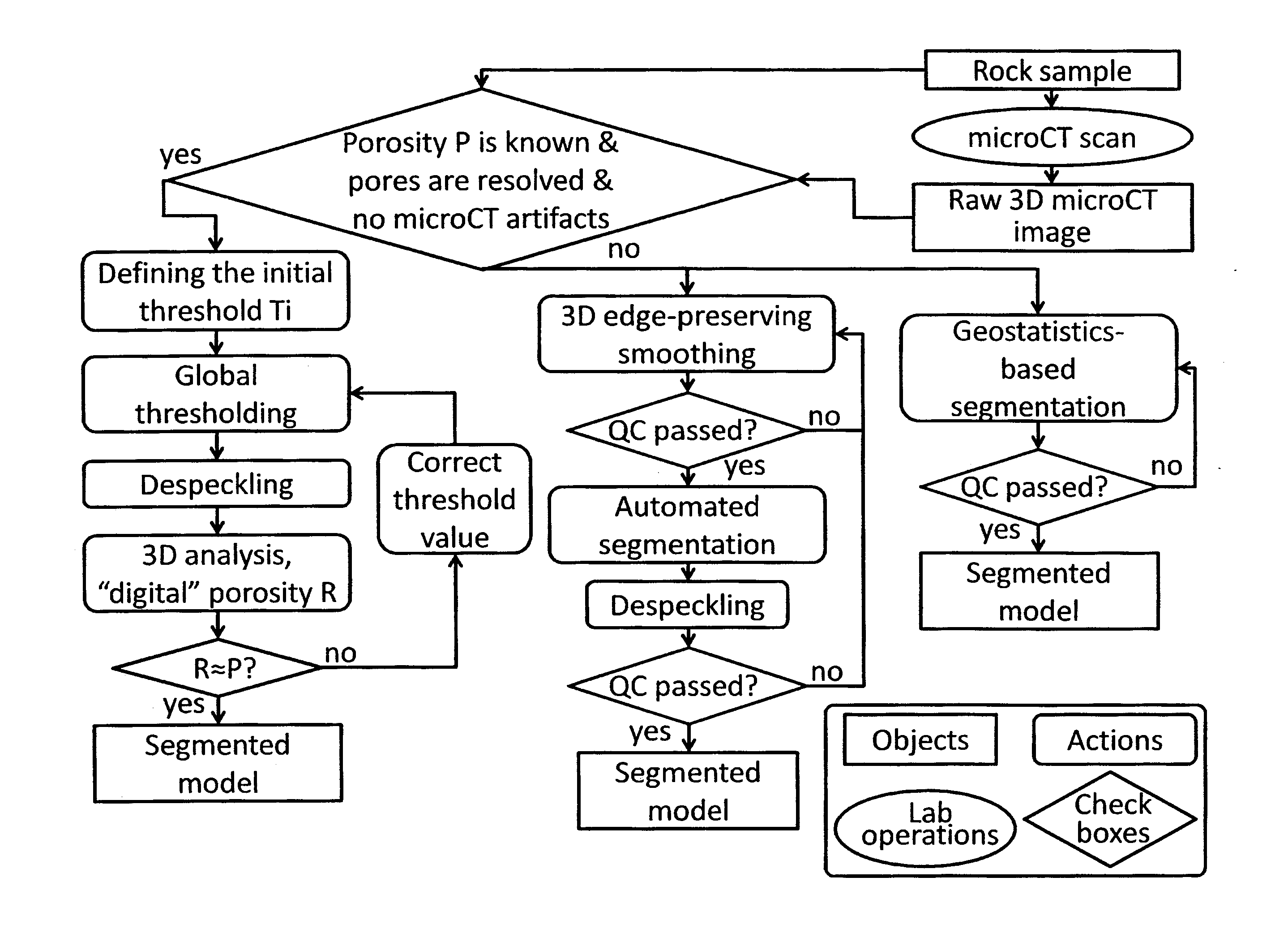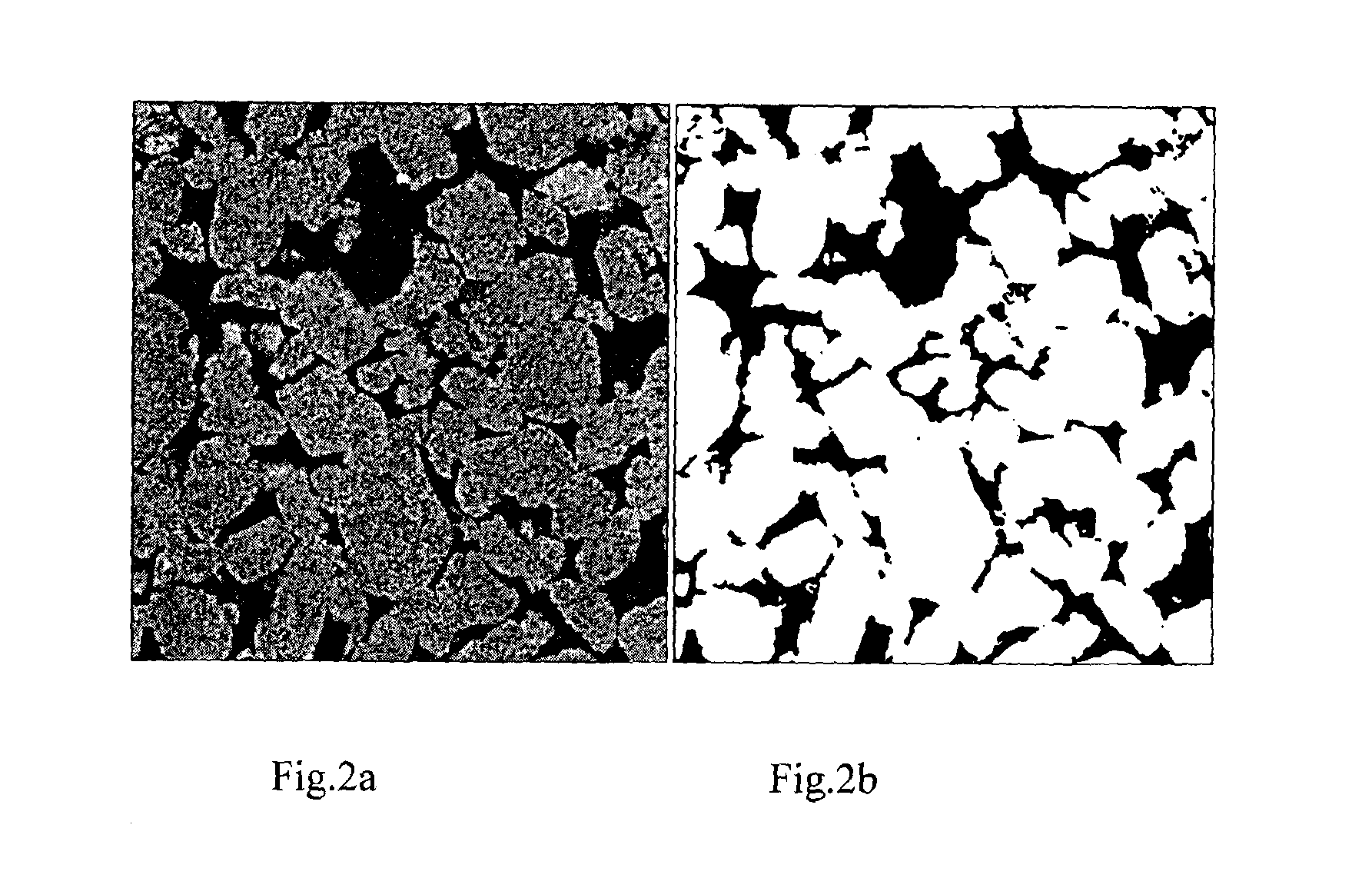Method for building a 3D model of a rock sample
a 3d model and rock technology, applied in the direction of material analysis using wave/particle radiation, image enhancement, instruments, etc., can solve the problems of thin sections as sources, destructive sections at microscale, and the boundary between dark and bright regions is not step-lik
- Summary
- Abstract
- Description
- Claims
- Application Information
AI Technical Summary
Benefits of technology
Problems solved by technology
Method used
Image
Examples
Embodiment Construction
[0015]Detailed flowchart illustrating an exemplary 3D model building method is shown on FIG. 4. In the present example, rock samples (core plugs, drilling cuttings, other rocks) are transported to a computer tomographic (“CT”) scanner, which may use x-rays for analysis of internal structure of the samples and for generation of three dimensional (3D) images of the samples. An X-ray micro / nanoCT scanning of a rock sample is performed at a particular resolution and a 3D initial image in gray scale is obtained.
[0016]Then analysis of the obtained initial three-dimensional image of the rock sample is performed, namely the presence of significant artifacts (microCT ring artifacts, smoothing due to thermal drifts of an X-ray source, beam hardening artifact, partial volume effects, signal-to-noise levels) is checked. A binarization method is selected in dependence of the image quality and properties of the rock sample. Image binarization refers to the process of converting an image represent...
PUM
 Login to View More
Login to View More Abstract
Description
Claims
Application Information
 Login to View More
Login to View More - R&D
- Intellectual Property
- Life Sciences
- Materials
- Tech Scout
- Unparalleled Data Quality
- Higher Quality Content
- 60% Fewer Hallucinations
Browse by: Latest US Patents, China's latest patents, Technical Efficacy Thesaurus, Application Domain, Technology Topic, Popular Technical Reports.
© 2025 PatSnap. All rights reserved.Legal|Privacy policy|Modern Slavery Act Transparency Statement|Sitemap|About US| Contact US: help@patsnap.com



